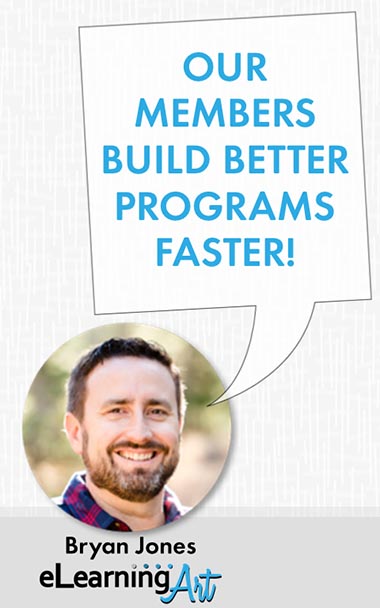Hello there! Ready for lesson 4? You know, it amazes me how humans can instantly process facial expressions and body language. Take a look at these images below and think about the message each conveys to you:
We see surprise, frustration, confusion, and thoughtfulness. That humans can recognize and quickly process facial expressions creates an opportunity for you to tell a story without using words. Two effects that I really like for storytelling are 1) focusing on expressions and 2) changing character expressions.
Focusing on expressions:
Full-body images are the best for building an elearning asset library because they provide the most flexibility for use. However, a full-body layout is not always the best perspective for your scenario. Take a look at the difference between the two layouts below and see how the zoomed-in version allows you to focus on facial expressions. I also grayed out the background in the example so that the learner’s eyes are drawn towards the character, not the background.
Most e-Learning authoring tools have built-in features for cropping. Or, simply run the image off the bottom of the page. If you plan to use mostly full-body images, you probably only need web-optimized images (about 540 pixels tall should do the trick. If you plan to do a lot of zooming and cropping to emphasize facial expressions, you’ll want higher resolution files (2,000 pixels tall gives you a lot of flexibility). You can take advantage of the power of facial expressions by zooming in on the faces of the characters in your scenario.
Changing character expressions:
Most e-Learning developers do not have the budget to use video in their courses. However, that does not mean you’re stuck with still scenes throughout your course. Having several images of the same character allows you to apply an effect that appears more like video than still images. By overlaying one image on top of the other and quickly switching from one image to the next, the character appears to react to a scene.
Most e-Learning authoring tools allow you to apply appear and disappear effects to your images. Below, I provide an example of how I did this in PowerPoint.
Exercise 1
Open up your demo pack and try inserting a few character images into a scene with the right perspective on facial expressions. Zoom in on the characters’ faces so their expressions and emotions are easily visible. Try inserting images of the same character with different expressions to see how the scene changes dramatically when the characters show different emotions.
Exercise 2:
Using a few of the images in the demo pack, try overlaying a few images to create the expression-change effect. Note: If you use the Jenny images, you will need to flip the image horizontally so that she faces the same direction in both images.





